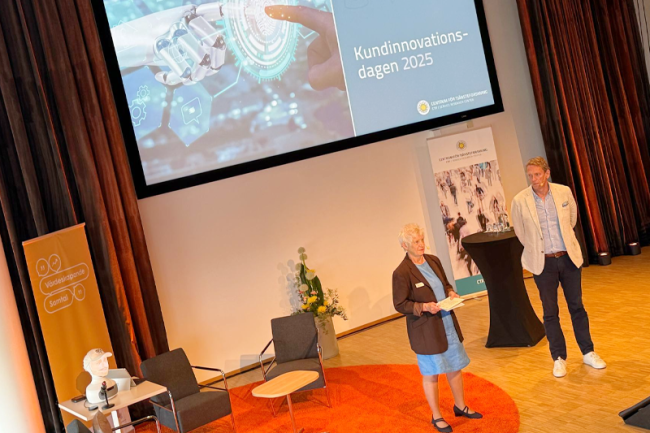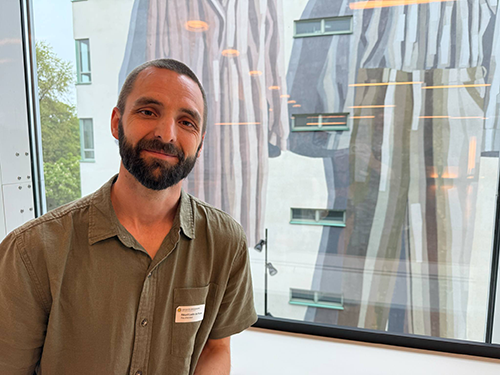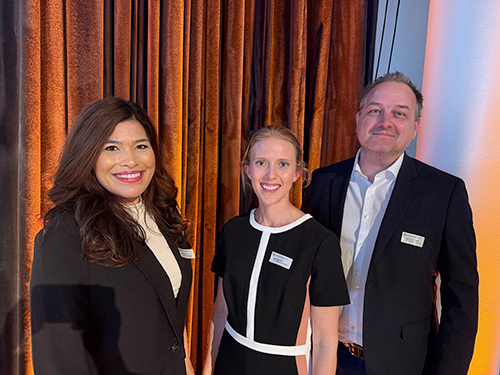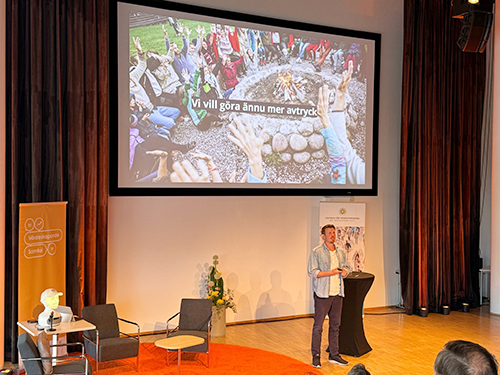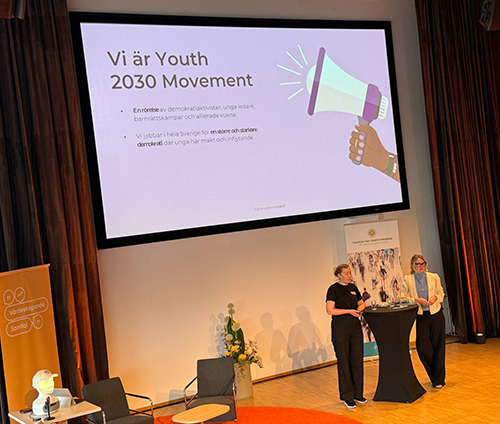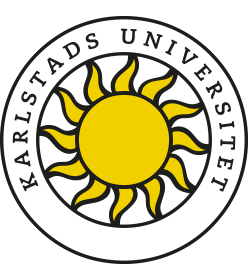Innovation in many forms at this year’s Customer Innovation Day
2025-06-25Robots guiding tourists, textile garment renovation, and the Ängsbacka course center in Molkom were among the highlights of Customer Innovation Day 2025.
The Swedish Innovation Index is based on responses from customers who rank companies and organizations based on their innovation capabilities and how attractive these innovations are perceived to be. Customers evaluate offerings, delivery, service, and interactions.
Why is customer-based innovation interesting? asked Per Kristensson, Director of the Service Research Center (CTF) at Karlstad University, to the audience.
Since innovation is a product, service, or process that can improve conditions for a user, it is indeed interesting. And because we have often had a narrow view of innovation by only trying to understand it from an organizational perspective, we instead want to focus on the customer and give companies a glimpse of how their customers perceive them.
And where customers spend their money is, of course, very interesting for companies to know. Some examples of the distribution:
• Housing: 23.9%
• Food and non-alcoholic beverages: 13.9%
• Transport: 13.0%
• Recreation and culture: 12.1%
Innovation can transform a company in several ways. The company’s offering, delivery, customer interaction, and customer environment are the four major components.
– In our latest survey, IKEA is by far the most innovative company in Sweden, said Per Kristensson. Followed at a distance by Spotify, Friskis & Svettis, and Zalando. We consistently see that perceived innovation capability affects an organization’s attractiveness.
Ängsbacka Focuses on Experience and Transformation – From Värmland to the World
Ängsbacka strengthens its brand through a multifaceted strategy ranging from local initiatives to global presence. During events like Värmland Bridge, visitors are invited to experience Ängsbacka’s unique atmosphere firsthand. Through projects like FoodSavings, Ängsbacka also actively works to reduce food waste.
We collaborate nationally with media to give journalists a personal insight into our operations, while our global presence is built on a strong reputation in personal development – as one of the largest players in Northern Europe, said Hampus Törnskog, CEO of Ängsbacka.
Instead of referring to “customers,” Ängsbacka calls its visitors “participants,” reflecting the deep, experience-based relationship.
– The real strength lies in the personal transformation that many of our visitors experience, said Hampus Törnskog. This often leads participants to passionately spread the message. Word of mouth is thus a central part of our marketing.
Ängsbacka plans to deepen its community engagement through new collaborations, with two major initiatives already underway – a leadership program and the new Transformation Festival launching in 2026.
RecoMended Aims to Revolutionize the Fashion Industry – With Large-Scale Circular Solutions
The textile industry faces a huge challenge, as only 0.3 percent of the world’s textiles are currently circulated. RecoMended, led by Rikard Ledin Da Rosa, wants to change this by offering innovative and scalable solutions to give clothes a second life.
– Every year, 12.6 million tons of textiles in Europe end up in landfills or incineration, said Rikard Ledin Da Rosa. RecoMended sees a business opportunity in helping brands restore and reintroduce garments to the market – through collection, sorting, assessment, and refreshing.
RecoMended already collaborates with players like Ridestore, where garments are restored by the pallet, and with Lureko and Nudia, where RecoMended acts as a backend solution to enable circular business models. The goal is to build a large-scale infrastructure where brands and retailers can easily send in garments for restoration, resale, or rental. RecoMended wants to become the go-to partner for companies transitioning to a more sustainable and circular textile industry.
– We want to find the formula to make this take off, said Rikard Ledin Da Rosa.
Gender Perspectives on the Green Transition – Risk of Excluding Both Women and Men
Together with research colleagues Siri Jagstedt and John-Erik Hassel at CTF, Sara Davoudi, researcher at the Service Research Center (CTF), conducted environmental scans to understand how gender patterns affect society’s ability to transition to a more sustainable system. Sara Davoudi highlighted how gender norms influence the green transition, with sustainability and the environment often being coded as feminine, while technical and advanced solutions – central to climate transition – are traditionally perceived as masculine. This division risks creating a gender imbalance in climate engagement.
– When we unconsciously associate different parts of the transition with gender, we risk losing both women and men along the way, said Sara Davoudi.
Per Kristensson Concluded the Day:
– Customer Innovation Day 2025 showcased the breadth of what innovation can be – yet always grounded in value creation for a customer, patient, or citizen. By highlighting the customer’s perspective, it becomes clear how crucial perceived value is for innovation to have real impact. At CTF, we believe our role in making this visible is important, not least because we want to contribute to a better society.
The moderator for Customer Innovation Day was journalist Annika Lindqvist.
